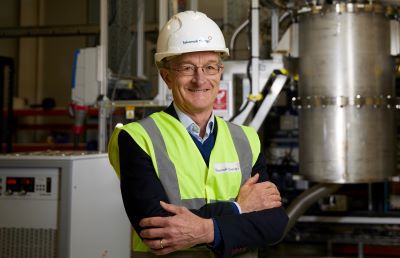The year 2023 was officially the hottest ever. The EU’s climate service primarily attributes the record temperatures, almost 1.5C higher than the long-term average, to humans burning fossil fuels.
Alarming Copernicus Climate Change Service data also saw a new daily global temperature record set on more than 200 days of the year. Fossil fuels are changing our planet, ruining lives and wiping out livelihoods.
Energy demand is set to increase by 40 per cent by 2035, so what next? These new figures are a stark reminder of the urgent need to both decarbonise today and invest in the technologies that can unlock the energy transition of tomorrow.
A complete energy transition cannot be achieved without fusion power – a transformative, global source of near limitless, clean, safe energy. Fusion energy, the power of the sun and stars, has the unique ability to support and sustain a long-term, permanent transition by ensuring future clean energy supplies are resilient, flexible and safe for our communities.
Furthermore, fusion offers reliable electricity and industrial heat to decarbonise essential heavy industries such as metal and fertiliser production with no harmful emissions.
Recent progress has shown fusion is no longer fantasy. Collaboration by the public and private sectors, national strategies and ambitious power plant programmes in the UK and U.S. are being boosted by advances in artificial intelligence and machine learning.
The best supercomputers are so powerful they can simulate what is happening inside a fusion device, accelerating power plant designs at rates impossible to replicate using present day physical devices. It is the power of AI that will break barriers and accelerate the path to commercial fusion in time to make a difference.
It has the potential to knock years off timelines and cut costs, and this will only gather momentum with better technology, training and computing power. This is just the beginning.
What is fusion energy?
When a mix of two forms of hydrogen (deuterium and tritium) are heated to form a controlled plasma at high temperatures – hotter than the core of the sun – they fuse together to create helium and release energy which can be harnessed to produce electricity and heat.
This hot plasma is confined using strong magnets in a spherical-shaped device called a ‘tokamak’. The energy created from fusion will be used to generate electricity and heat in the same way as existing power stations. Fusion is extremely efficient, creating many million times more energy, per kilogram of fuel, than burning coal, oil, or gas.
Digital twin
A tokamak digital twin is invaluable in optimising and validating experimental scenarios and developing plasma control systems at a much faster rate than contemporary machines can handle.
Take Tokamak Energy’s current operating device, ST40, which reached plasma temperatures of 100 million degrees Celsius in 2022 as part of the company’s mission to deliver commercial fusion in the 2030s. That is six times hotter than the centre of the sun. It can run plasma pulses up to 20 times a day when operational for approximately one third of the year, either side of upgrades and routine maintenance.
Crucially, these experiments produce real, measurable, publishable, verifiable results in the real world. Once you have that, digital twin simulations become really valuable.
Running a pulse in a digital twin takes only a second, creating a virtually unlimited space for exploration and scientific discovery. When combined with rapid advances in superconductor magnet technology, used to confine and control the plasma, and materials research, AI has huge potential to cram years and cut costs of fusion development. How else can we avoid breaching key international climate targets?
“Artificial intelligence can help us solve some of the greatest challenges of our time,” Prime Minister Rishi Sunak said when setting out his national vision at the Royal Society in the Autumn. Arguably the greatest and most urgent scientific and engineering challenge of them all is delivering fusion energy to the grid, and AI will provide the breakthrough the world needs.

David Kingham, Tokamak Energy co-founder and executive vice-chairman











Water Sector Talent Exodus Could Cripple The Sector
Maybe if things are essential for the running of a country and we want to pay a fair price we should be running these utilities on a not for profit...